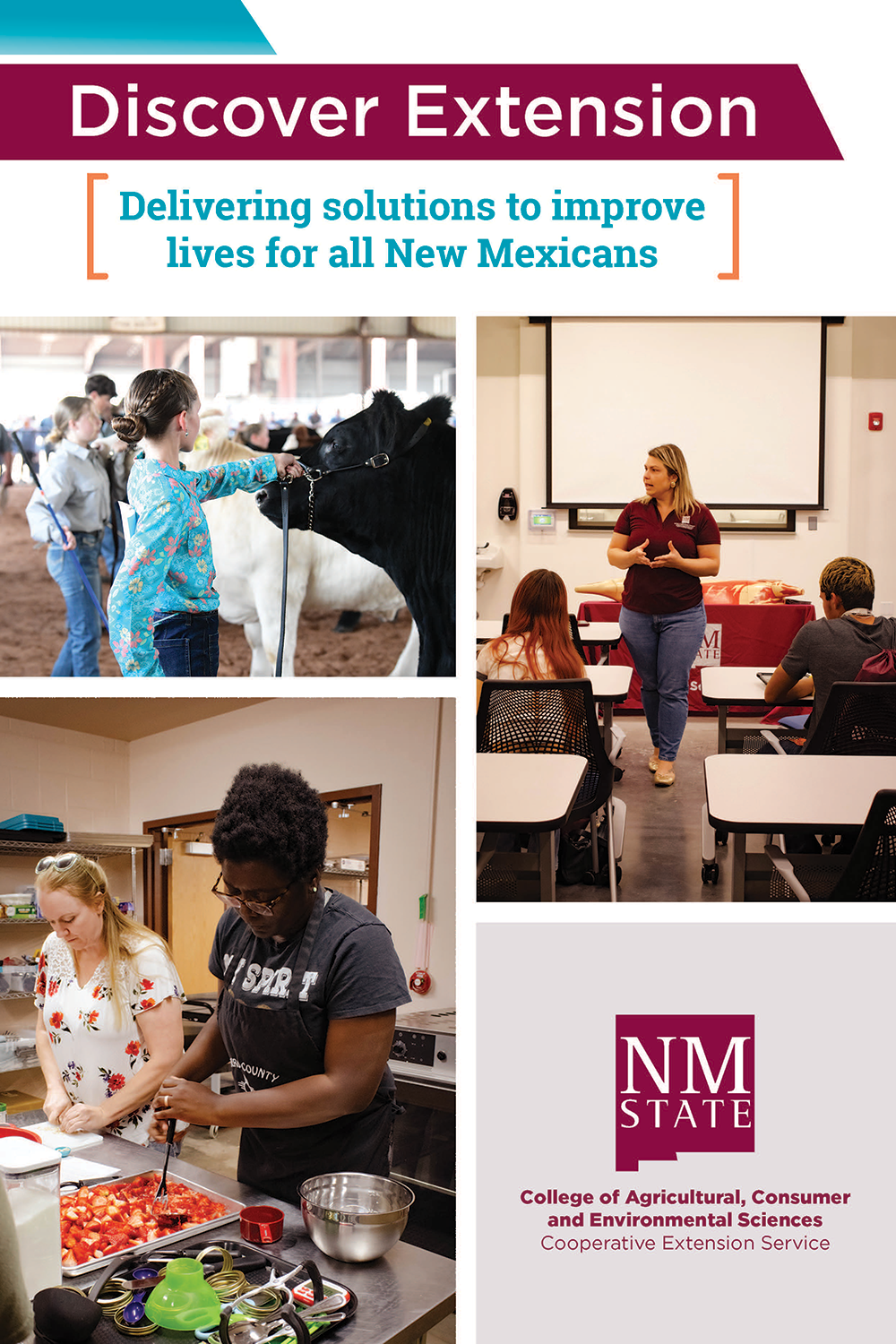Read about Extension's Impact
Discover Extension
Delivering Solutions to Improve Lives For All New Mexicans
Discover how Extension delivers solutions to improve lives across our great state.
Strengthening Communities Through Cooperative Extension Programs
The New Mexico Cooperative Extension Service (CES), part of the New Mexico State University College of Agricultural, Consumer, and Environmental Sciences, provides practical, research-based knowledge and programs to serve the citizens of
New Mexico. This has been our mission for more than 100 years and will remain the crux of our efforts in the future.
CES is a unique federal, state, and county partnership. CES has staff in all 33 counties and many Tribal areas in New Mexico, and collaborates with more than 1,000 organizations, state and federal agencies, other universities, and 10,000 volunteers. Extension faculty reach over 650,000 New Mexicans – about one-third of the state’s population – who benefit from wide ranging CES educational programs.
We focus on collaboration to foster economic, educational, and community development, keeping the needs of our neighbors at the forefront of our work. While our mission endures, the delivery and areas of study evolve.
Extension efforts related to positive youth development (pages 2-8), agriculture and natural resources (pages 9-13), health and wellness of New Mexico families (pages 14-19) and community development (pages 20-24), as well as empowering students (pages 25-27) are priorities. The programs highlighted here are just a sample of the amazing work done across the state to improve the lives of New Mexicans.
Extension work will continue to evolve, and specialists and agents will seek additional resources to remain responsive and advance our diverse programs and research in areas identified as critical to our state’s future.


Jon Boren, Ph.D.
Associate Dean/Director
NM Cooperative Extension Service
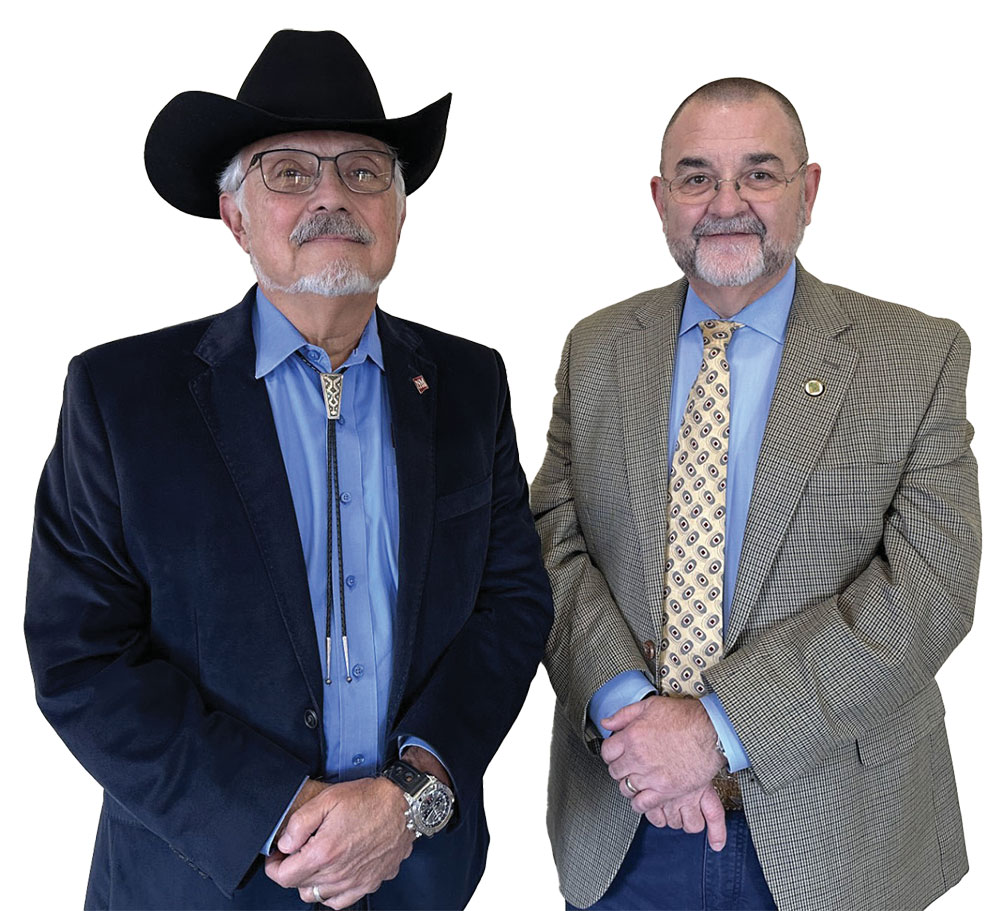
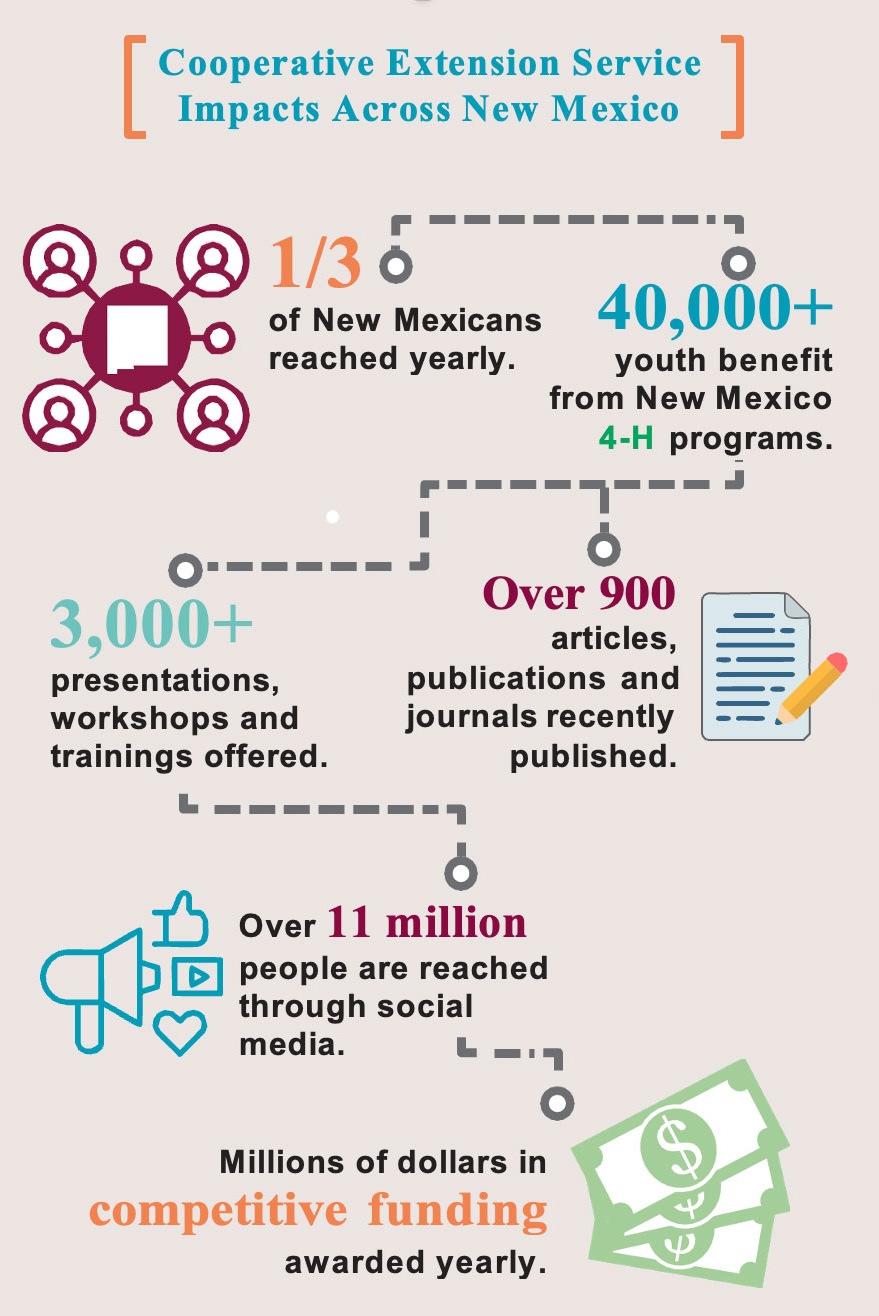
Youth Development
Connecting with Youth Through Agricultural Education
Shannon Mounyo knows that while it may have changed names over the years, the mission of the AgXplorer program has remained the same. The Cooperative Extension Service (CES), in collaboration with industry partners, coordinates the AgXplorer program at events and counties throughout the state.
Mounyo, who has participated in AgXplorer for more than 18 years, said the program provides elementary students an opportunity to learn more about agriculture and the occupations available. Mounyo is a teacher at Magdalena Elementary, but she also serves as a bus driver and the school coordinator for the AgXplorer event. AgXplorer is an agricultural literacy program that coordinates a wide variety of organizations to deliver educational programming to school-aged youth.
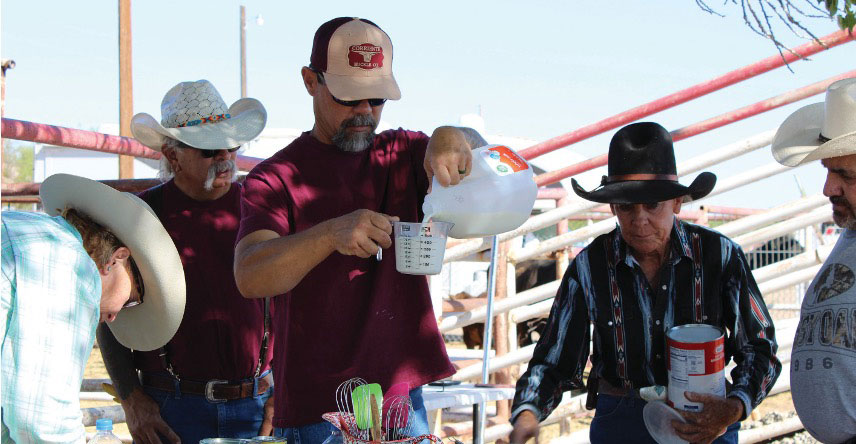
As a rural school, Magdalena Elementary has many kids from agricultural backgrounds. What makes this program special is that any child, regardless of their agricultural knowledge, learns something new throughout the day. Mounyo shared that her students learned about the four compartments in a cow’s stomach, and they even had the opportunity to safely stick their hand in a cannulated cow, which was a new experience for all of them.
AgXplorer aims to teach children the importance of agriculture and the daily impact it has on life. Mounyo enjoys that the program offers hands-on opportunities as well as interactive visuals for her students to learn new things. One year, the program featured a demonstration of a milking machine on a live cow while another station had a horse with a skeletal system painted on its side and a digestive system painted on the other.
Mounyo appreciates that the program allows her to seamlessly incorporate agricultural opportunities into her curriculum and it shows her students firsthand how important agriculture is in the community.
Shirley Muncy has served in many capacities during the Sierra County AgXplorer event for more than 20 years. From a teacher and elementary principal bringing students to a presenter and event organizer, Muncy has enjoyed seeing the program grow and expand over the years.
“I’m always amazed at how many children have never touched a sheep, a steer, or a horse, so that to me is always amazing that the kids are excited to see the live animals,” Muncy said.
Muncy noted how AgXplorer brings the community together each year. From volunteers to presenters, the community shows up to support the event and the children who participate. They provide demonstrations, hands-on activities, and opportunities to see agricultural practices in action.
Muncy recalled one of the earlier years of this event when a volunteer rode his pack mules down to the ranch where the event was being hosted. She shared how excited the kids were to see these huge animals that many of them had never seen in person before.
Muncy explained the event not only benefits the elementary school children, but also the older middle and high school students who gain leadership skills and improve public speaking by presenting their programs and projects. During the event, elementary aged students rotate through a series of agricultural presentations from organizations, businesses and volunteers.
AgXplorer is available to schools and organizations across the state that are interested in coordinating a program.
To learn more about the program or request an event, contact Cheryl Butterfield at cherylb@nmsu.edu or 575-646-1156.
Extension Delivers 4-H Programs Through Community Center
New Mexico 4-H is a wide-reaching youth organization that allows children to learn and grow through a variety of projects and specialized interests. While 4-H is open to anyone ages 9-19, not all youth are involved in the program. This is where 4-H Skills School comes into play in Socorro County.
Hosted every Monday at the Socorro Youth Center, children ages 3-12 enrolled in the center can experience 4-H-based skills and projects. The 4-H Skills School provides practical, research-based knowledge in hands-on and interactive formats that leave youth excited for the next lesson.
Shaye Lee serves as the facilitator at the youth center and has seen first-hand the impact the program has on kids. Lee explained that the kids remember it’s Monday before the staff do; they always look forward to learning something new and they’ll spend the rest of the week talking about what they learned that week at Skills School.
Lee participated in 4-H as a child and knows the benefits of the skills she learned during that time. When the Extension office called her about the possibility of hosting the Skills School at the Youth Center, it was a no brainer; she knew it would be a good fit for the kids enrolled. The Extension agents cover a variety of topics from hydroponics to STEM and leadership development. The program strives to provide a positive learning opportunity by extending 4-H projects and activities to audiences not yet reached, and at-risk youth in Socorro County.
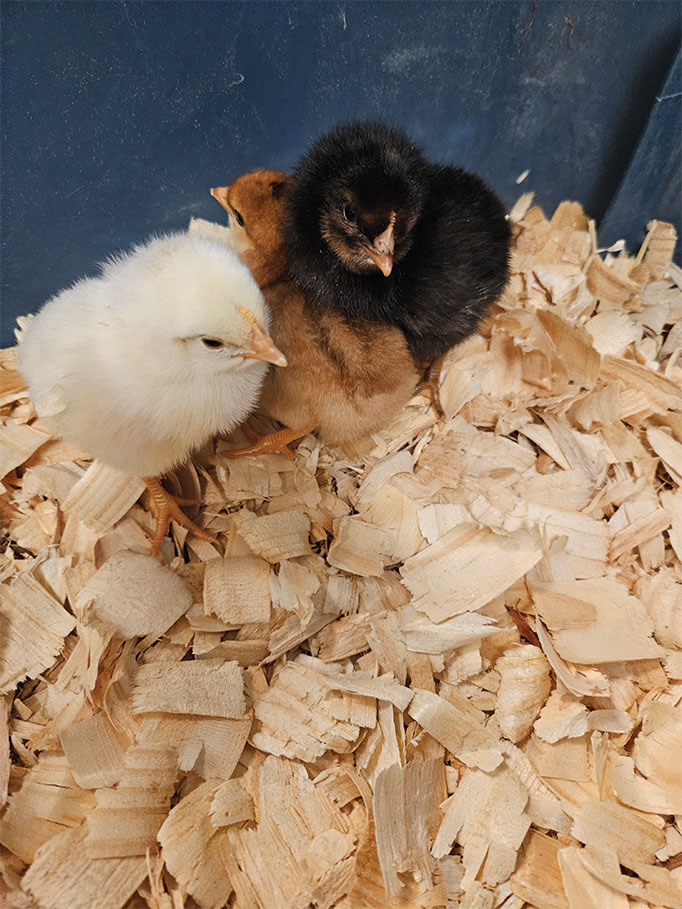
One section covered during 4-H Skills School was the Embryology Egg to Chick Program, which involved hatching eggs in an incubator. The fertilized eggs were donated by a local 4-H family, and every week the kids would look forward to checking the eggs’ progress and watching them turn. Lee watched the kids check a lesson board that illustrated the embryos’ stages of growth each week.
“We candled the eggs and got to see the life cycle” she said. Candling an egg is the process of checking the development of a chick by holding a fertilized egg in a dark area and shining a light at the bottom of the egg, often using a flashlight. The light shines through the shell, illuminating the developing chick inside.
Lee went on to share that with this lesson the kids were able to hatch four chicks, and that the kids were mesmerized by the whole process. The kids still talk about it.
“This program is really neat,” she said. “A lot of these kids would not get these opportunities or lessons outside of this skills school.”
Cultivating a Safety Mindset in Third Graders
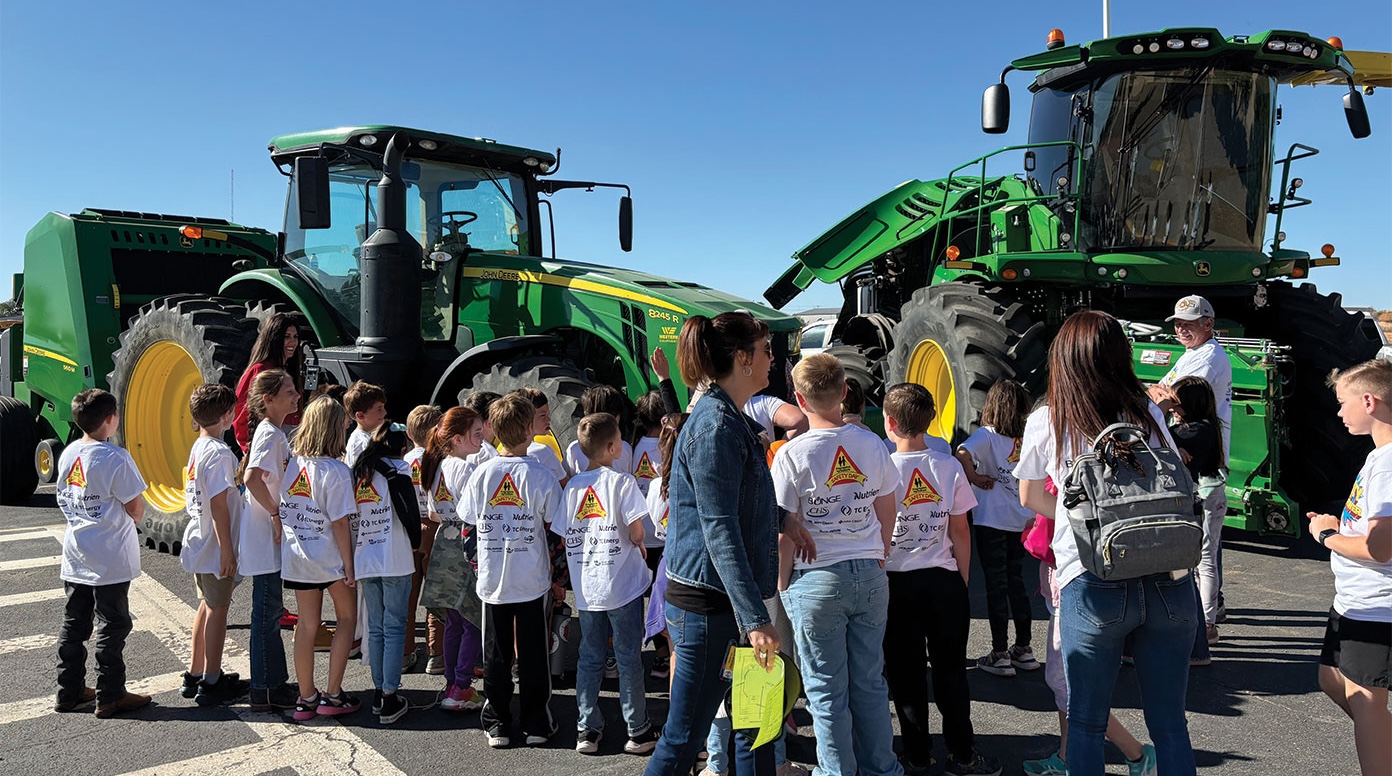
If you attended the third grade in Roosevelt County within the last 30 years, there is a good chance you remember attending Progressive Ag Safety Day. This event has become a tradition and is an event teachers and volunteers look forward to each fall. For the past 14 years, Shawna Neece has joined other third-grade teachers in Portales in taking her students to this annual event.
Through corporate sponsorship from communications provider Plateau, many locations in Eastern New Mexico have had the opportunity to host this safety event. While it is called Progressive Ag Safety Day, the program covers a broad range of topics that are essential for all children, whether they are around a farm or not. The program strives to provide training and awareness of a variety of safety measures from lawn mower safety to electricity, general water safety and first aid. Prior to attending the event, one of Neece’s students found themselves in a position where they had to call 911 for help. He did not know what information the operator needed or what details might help in the situation, this can be a scary moment for anyone let alone a child. This student told Neece that because of the 911 training during Ag Safety Day, he felt better prepared for how to communicate information during a 911 emergency phone call.
Doug Schwartz, a third-grade teacher at Texico, has been attending the event in Curry County for the past seven years. Schwartz shared how the program has brought large machinery awareness to many of his students over the years. Many of them see a tractor in a field as they are driving down the road, but do not understand how large the machines are in size until they see them in person at this event. Schwartz noted that after attending the event the kids have a better understanding of the dangers surrounding large machinery and how to be cautious and stay safe when they are near.
The event offers hands-on activities available for the students to help them learn and retain the safety information. The event begins with an opening ceremony, and then students rotate through a series of 10 educational stations. Station topics vary from year to year, but they are always something important for every child to learn and share with their siblings and parents.
Extension Plants Seeds of Knowledge through Growing Forward Farm
Where does our food come from? When you think of farming, you may picture a large acreage, seeded with a variety of crops, often maintained by generations of families. But farming can take place on a much smaller scale, developed in steps that can be attainable to anyone.
In San Juan County, the Growing Forward Farm Youth Tours has provided an opportunity for community members and youth to come together to reconnect with the agricultural industry and learn about healthy food options. These tours utilize a small-acreage farm that is divided into smaller sections for a variety of uses. The upper four acres are used as a demonstration area, including gardening, xeriscape, composting among other things, giving people the opportunity to walk around and learn something new. In the fall and spring of each year, the farm is opened for fourth-grade students to tour and learn more about farming and agriculture.
Robin Rivera is the lead fourth-grade teacher with Aztec schools and has organized the trip for the entire fourth grade for the past two years. For Rivera, it is very important that students learn where their food comes from and that they experience lessons outside the walls of the classroom. She has seen the program evolve from raw land into a farm, including the development of a new barn that will be the learning center and the establishment of fencing and irrigation.
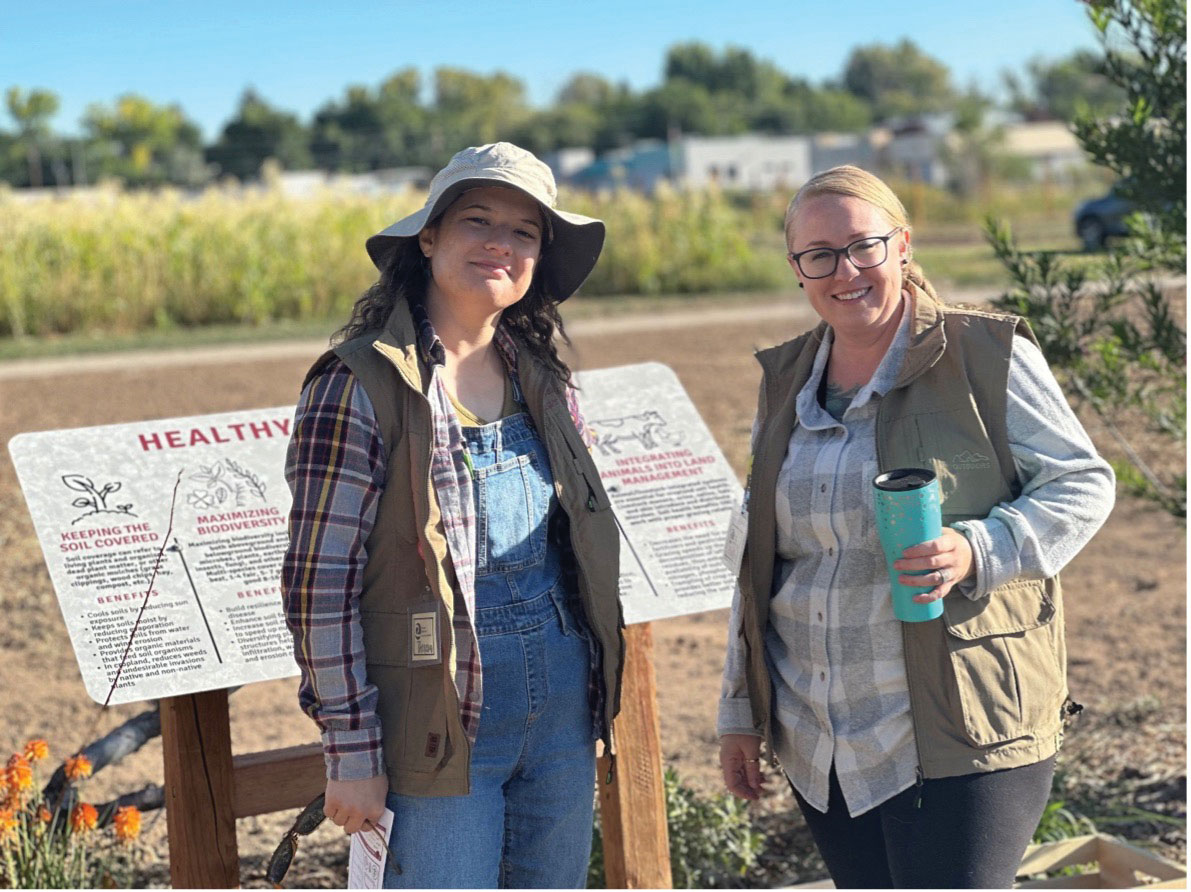
While visiting the farm, students rotate through agricultural presentations that may vary depending on the season; some of the presentation topics include erosion, bike safety, making apple cider, and tending raised bed gardens. There’s even a livestock petting zoo. The common theme of presentations is agricultural careers, nutrition, outdoor recreation and learning about where food comes from.
A favorite of Rivera’s fourth-graders is the composting station. The students play a guessing game to see which items can be composted. They learn that composting can be done at a small scale and a lot of kids walk away with a plan to try it at home.
“The farm was a great way for kids to see what they can do for themselves and be impactful, even with little space in the middle of town,” Rivera said. “I believe it is our duty to make sure our kids can carry on sustainable ways to provide for themselves, their families and their communities.”
She loves seeing her kids get excited about the various stations and the engagement that takes place during the visit.
Ryan Dudgeon, a fourth-grade teacher at McKinley Elementary, has also been bringing her students to the farm since it was opened for youth tours. Dudgeon appreciates that the farm offers so many hands-on opportunities for students. At her school, Dudgeon is organizing a community garden and is hopeful that her students will be able to use the knowledge and skills they gained at the farm to assist with the garden.
The first time to the farm was a memorable trip for Dudgeon and her students. The fourth graders on that trip were quite the rowdy bunch, but as they rotated through stations they began to get along and began participating and learning together. Dudgeon shared that those students carried that mindset back to the school with them and they remained engaged and involved in class time for the remainder of the year. The impact the farm had on the students could not be denied, and that positive experience continues each time a group participates in the youth tours.
During the youth tours, students can see plots of land managed by farmers involved in the county’s New Farmer Training Program. A 2024 high school graduate from Farmington High School, Carson Stark joined the New Farmer Training Program in 2022 soon after the Growing Forward Farm was established. Prior to his involvement with Growing Forward Farm, Stark participated in the Master Gardener program.
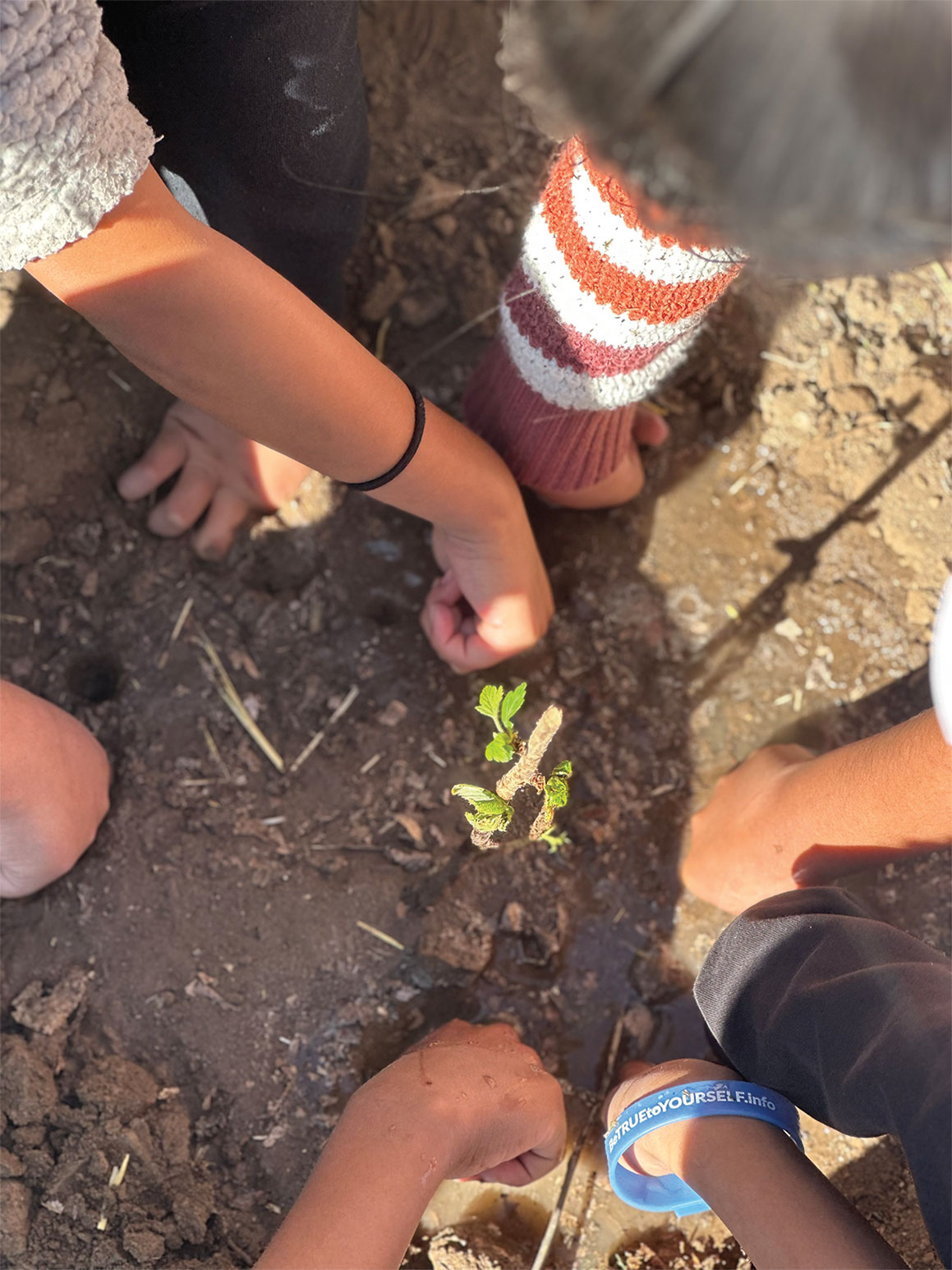
“I feel like I have grown along with the farm,” Stark said. “I have changed so much of what I do including the irrigation system, and really spreading out my crops so that they can grow well. I am working with the Extension Agents to plan the next round of new farmer training and will serve as a mentor for the next round of new farmers.”
He has been a part of the program for three years and was able to establish a business selling crops to Farmington Municipal Schools so they could serve them in cafeteria lunches. It also gave Stark the opportunity to dream bigger and really look at the opportunities that are available in farming. He grew 15 cucumber plants his first year; whereas this year he planted 4,000 cucumber seeds and harvested roughly 10,000 pounds. When students are on farm tours, they can see Stark’s farm and they learn how the vegetables they are seeing will eventually be a part of their lunch menu. It is a great way to truly illustrate where their food comes from.
“I think connecting kids to where their food comes from is really important, and I hope that they continue to seek that out as they grow up,” Stark said. “Maybe some of them will want to become farmers after they saw what I have been able to do. That’s a pretty great feeling knowing that I can make that kind of influence with my hard work.”
For more information, visit nmsu.link/GrowingForwardFarm.
Youth Experience Scope of Ranch Management from Extension Pros
Managing a ranch can be a complex business to say the least. Since 2011, over 200 youth have had the opportunity to participate in New Mexico Youth Ranch Management Camp. The camp offers college-level instruction to students ages 15-19 covering topics from managing natural resources to marketing strategies and understanding financial statements. Meat science and range science, in addition to wildlife and soil health, are also units highlighted during the week.
Campers work in teams and learn how to overcome challenges that arise on a ranch; this gives them a unique look into the hard work and sense of accomplishment that can come from owning and operating a ranch in New Mexico. Aside from teamwork, campers focus on learning new skills individually and often through friendly competitions along the way.
For Jessica Eck, camp was the starting point for her newfound passion and eventual career path. Eck graduated from Hatch High School without a clear direction of what she would do next. College was always the next step, but it wasn’t until her time at ranch camp that she knew she wanted to study range science. While she did grow up around horses, roping and pushing cattle, she hadn’t considered range as a career. “I loved being out on the range though I had no concept of range management, or how it all connected to beef, markets, economy, wildlife, etc.” Eck said. “That eventually led to my NRCS career as a range management specialist.”
The camp brings together Extension specialists, County Extension agents and members of the ranching industry to provide students with a variety of resources. Throughout the week, lessons build upon one another, and the youth leave with not only a broader knowledge of ranch management, but new skills and industry contacts that they will carry with them into their future careers.
For Eck, ranch camp is still something she talks about and recommends to youth whenever she has the chance. Her experience at camp left a lasting impression on her; so, she advocates for other youth in the state to take part in the same opportunity.
Learn more at nmyrm.nmsu.edu.
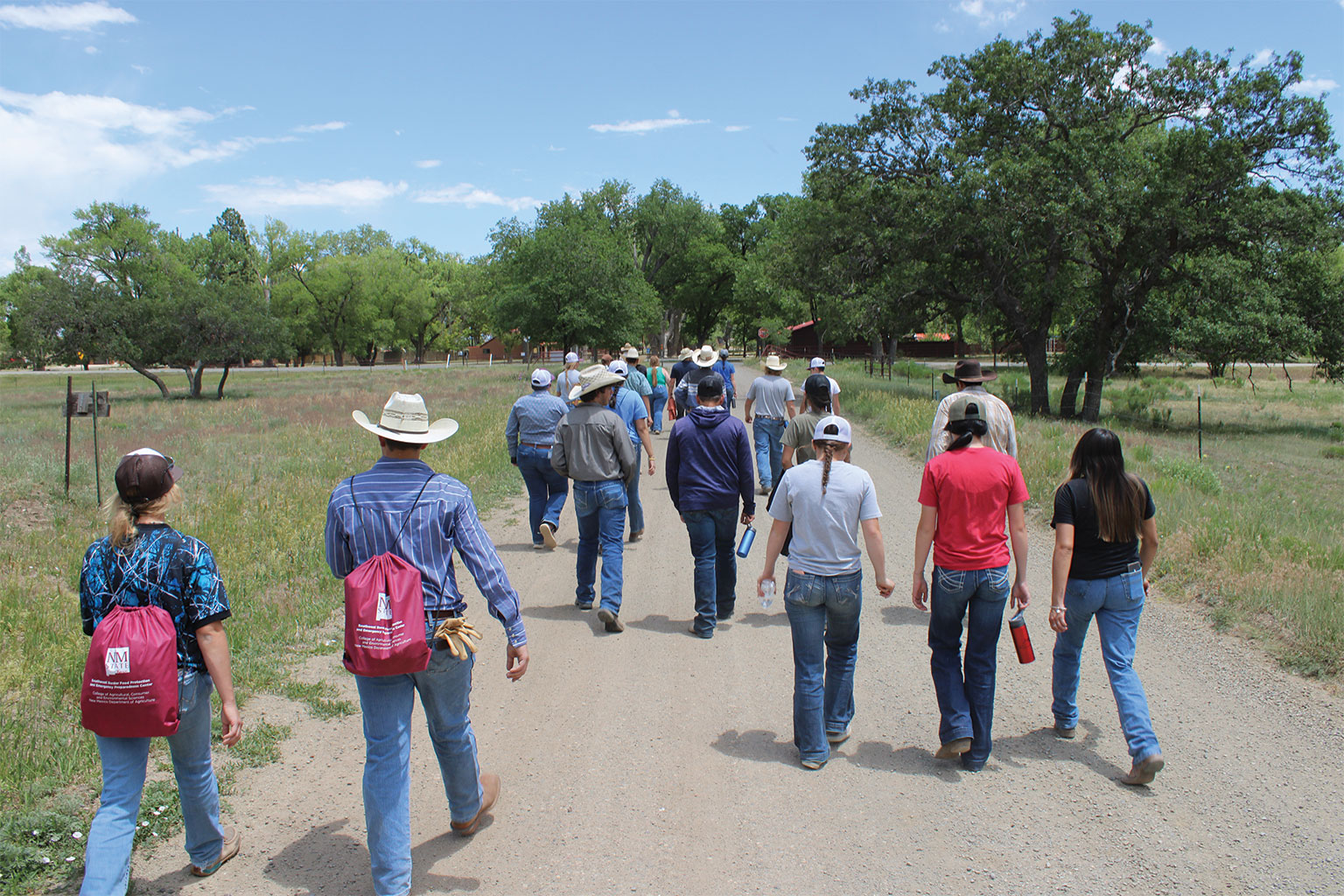
Agriculture and Natural Resources
NM Indian Livestock Days Provides Resources, Connections to Communities
John Romero has seen New Mexico Indian Livestock Days from all angles. He first attended more than 20 years ago. The more he experienced, the more he wanted to be involved.
For the last 15 years, Romero, a registered member of the Pueblo of Laguna, has served on the longtime event’s planning committee.
“As a Native producer, I think it’s a great event because it brings resources that are sometimes lacking to Native producers because we’re so far-flung,” Romero said. “This is a great opportunity to connect with industry experts and connect with fellow producers.”
Romero has seen first-hand the growth of the educational program, which links agricultural producer’s from the Four Corners area with NMSU’s Cooperative Extension Service organizers. The event is open to everybody.
“It has expanded quite a bit on subject matters,” he said. “It used to be real basic: animal husbandry and sheep. Now it does not focus on sheep as much, but on cattle. As USDA has expanded their efforts, we have more of their reps and programs attend Indian Livestock Days to show producers there are opportunities available that they can apply for and use.”
Romero says the Livestock Days event has brought many beneficial changes to communities. Among the biggest, he says, is the new ideas. It allows greater mass media access for a group of producers that doesn’t always have reliable internet connectivity.
Partnerships have blossomed because of Indian Livestock Days too. Labatt Food Service came to the program and now partners with Navajo, Acoma and Laguna producers in the Native American Beef Program, which facilitates Navajo-produced beef being served in Navajo casinos.
Romero also has joined with Horses for Heroes to offer equine therapy to veterans with PTSD, which he says is among the most enriching and important connections.
Romero appreciates the producer-driven nature of Indian Livestock Days.
“I wanted to get people like myself and other producers who are boots on the ground and using it every day,” he said.
The event began in the 1970s at the NMSU Las Cruces campus. After a brief hiatus in the 80s, the event returned stopping only briefly during the pandemic. Initially, it was known as All Indian Livestock School. In 1996 it moved to the Four Corners region to better serve the clientele.
“This is the one time of year we all come together,” Romero said. “In the Native world, we look at each other as one big family.”
Visit indianlivestock.nmsu.edu to learn more.
Extension Links Cattle Ranchers to Promising Tech
When great challenges hit New Mexico communities, NMSU’s Extension agents and specialists take pride in delivering innovative solutions.
The Black Fire in 2022, which ranks among the largest disasters in the state’s history scorched more than 325,000 acres of ranching land in southwest New Mexico. The fires and subsequent flooding destroyed hundreds of miles of fences, threatening the immediate livelihood of cattle ranchers in the Black Range area within the Gila National Forest.
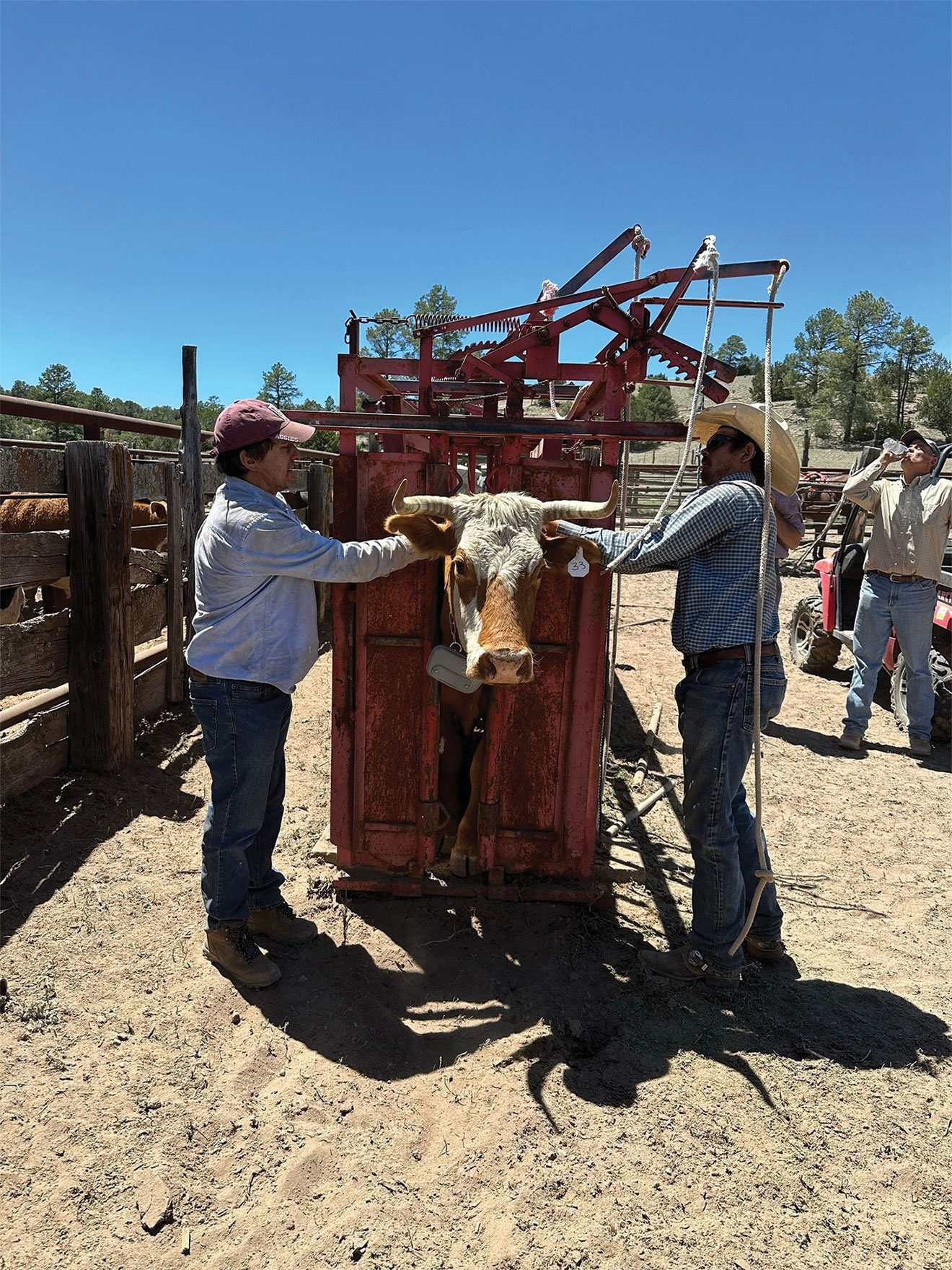
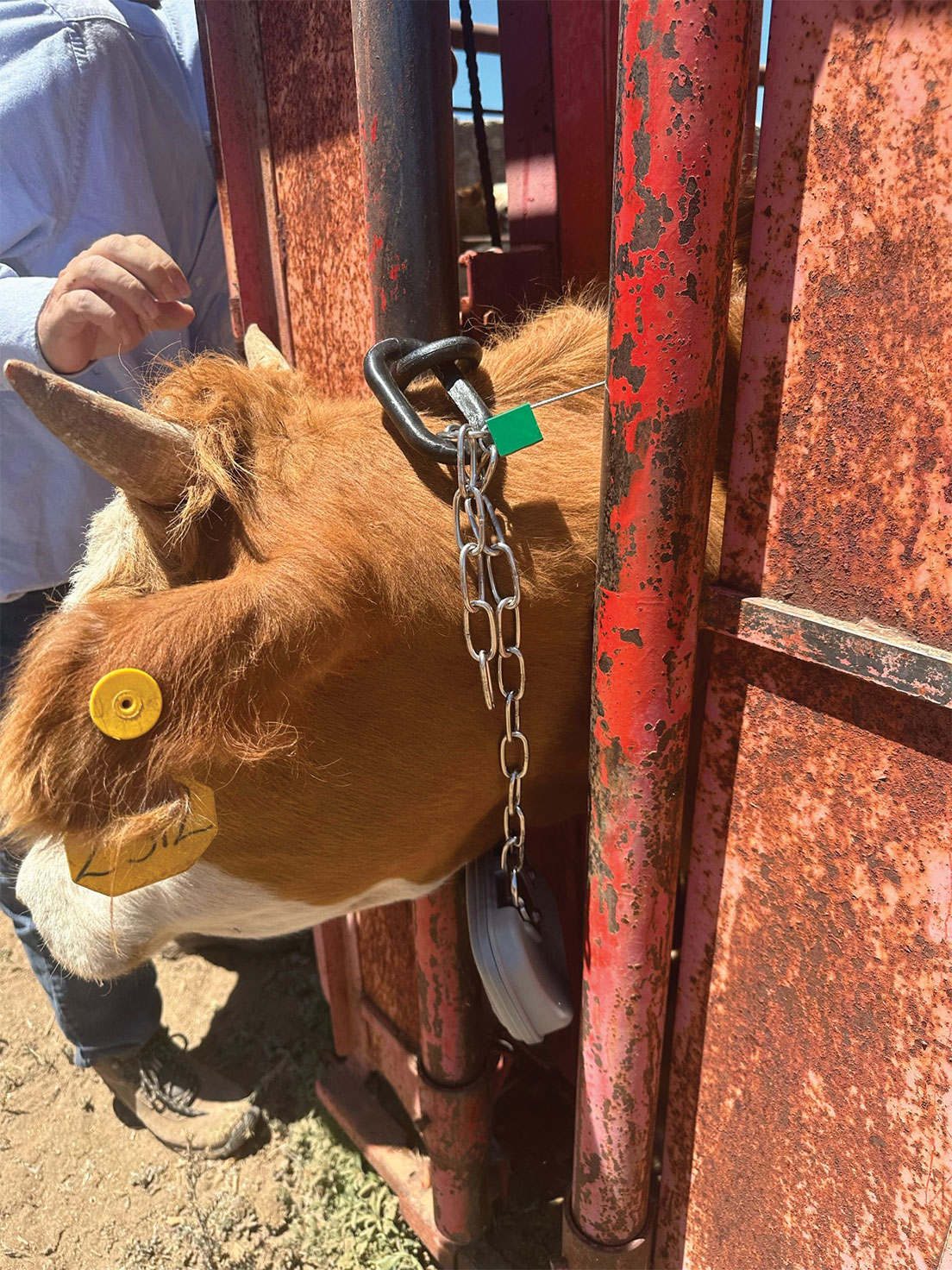
In response, members of the Cooperative Extension Service, others from the NMSU’s College of ACES, and representatives from the U.S. Forest Service worked with local ranchers to help secure a grant for virtual fencing. The developing technology allowed the Fowler Cattle Company to monitor and control their herd in the areas lacking adequate fencing.
Jack Crumbley of Fowler Cattle says that the virtual fencing “saved time and effort in managing our herd.” Not only that, but it allowed operations to maintain some normalcy as they planned how to rebuild the burned fences.
While he embraces technological advancements that can make ranching more efficient, Crumbley says he was skeptical initially of virtual fencing. The technology uses collars with GPS trackers for the cattle and solar-powered communication kiosks to provide information on each animal’s location to ranchers. The collar can produce sounds, vibrations and small electric shocks designed to keep herd members within the virtual fence boundary.
“We are eager to see how the technology evolves in the next few years.” – Jack Crumbley
Crumbley says that simply being able to locate the herd via the GPS technology allowed Fowler Cattle to complete their fall work in about a third of the usual time. They also could respond more quickly if cattle were in sensitive areas, could identify if a predator was near the herd, and were able to keep first-calf heifers close to the house for monitoring.
The virtual fencing technology has its own unique challenges, Crumbley said. Batteries have to be replaced, collars can break, weather can affect the GPS and solar technology and training is crucial. He added that it took a few months to get the herd to recognize and respond appropriately to the collars signals.
“We are eager to see how the technology evolves in the next few years,” Crumbley said. Data and knowledge from this virtual fencing endeavor will serve as a reference point and template for ranchers dealing with similar challenges in the future.
This work is supported by the Rapid Response to Extreme Weather Events Across Food and Agricultural Systems
(A1712), project award no. 2023-68016-38885, from the U.S. Department of Agriculture’s National Institute of Food and Agriculture.
Images were provided by Kim Crumbly from Fowler Cattle.
Collaborative Conservation: Longtime NM Rancher Thankful for CES
In Harding County Tuda Libby Crews owns a family ranching operation that has been in her family for seven generations. In 2001 she inherited one-fifth of the original family ranch and returned home to learn first-hand that “collaborative conservation is the most effective way to get things done.” Through hard work, thought, planning, time and partnerships, she led restoration of the beloved grassland that is so close to her heart.
Over the past two-decades, the effort required teamwork, including assistance from multiple Cooperative Extension Service (CES) programs. Before regenerating the heritage ranch, the Crews family sought education on holistic management. One example of this collaboration occurred when 10 miles of Ute Creek was infested with salt cedar. The Crews family partnered with CES and other entities to treat the infestation, and five years later, the Ute Creek riparian restoration project served as a regional model of success.
Early-on, Crews focused on the symbiotic relationship between a high bird species count and healthy grasslands; in fact, birds are nature’s indicators of healthy grasslands. The first bird species count in 2004 identified 17 species. The most recent bird species count in 2018 identified 112 species. Ranch-wide, wildlife species and numbers have dramatically increased.
Keeping track of the interaction between water, healthy soil and vegetation requires hands-on labor and constant oversight. CES collaborates with countless groups that rely on grasslands needing scientific information in all facets of management. Crews is among many stakeholders statewide to benefit from information gained through CES grasslands management programs.
In 2023, CES provided 86 monitoring kits — a computer-based data interpretation and records keeping program — to trainees in support of their on-the-ground efforts to assess grassland conditions. Seventy-six percent of participants indicated an increase in knowledge following presentations and demonstrations and 64% stated they would use the information, saving an average of $2,179 per operation.
Extension has been part of Crews’ life since joining 4-H at 11 years-old. Her life-long mentor, 4-H Extension agent, Owaissa Heinmann, “guided a strong work ethic, taught me how to think, and imparted a desire to “Make the Best Better,” Crews said.
“These values have stayed with me all of my life and I remain grateful for that early training.”
Enriching Lives Through Soil
If you’ve ever had the pleasure of meeting Don Thompson, it is clear he has a passion for soil. It can be heard in his voice as he shares stories of the many programs he has been involved with and the efforts he has made on his own ranch west of Santa Rosa in Guadalupe County. Thompson’s father was conservation minded before it was popular, and he passed that mindset along to Thompson who has devoted himself to learning and implementing soil improvement projects over the past 20 years.
Creating and maintaining healthy soil is vital to the agricultural industry. Whether a farmer is preparing a field for crop production, or a rancher is analyzing forage growth for cattle grazing, the condition of the soil could impact the success of the season. Thompson is a lifelong learner and has sought out
new techniques and processes that he can implement on his ranch. He has partnered with Natural Resources Conservation Service (NRCS) as well as Cooperative Extension
to put research into action on his land, even recently offering a space at his ranch for fellow program participants to learn about biochar through Extension programming.
In addition to on-site demonstration, Extension has worked with industry partners to offer field days, presentations, and publications to producers across the state. This offers not only a variety of learning tools, but also a series of soil health areas that can be utilized depending on the needs of the land.
The process of replenishing and improving soil health can take time to see through, but Thompson has patiently and consistently demonstrated his dedication to these efforts. One example is a project that looked to improve erosion by filling in arroyos in the lower areas of his land. It took time, but juniper trees were pushed out into the soil and slowly new soil began to build up in the arroyos. In one area, Thompson shared that the process was done on a 2-feet-deep arroyo. Eventually, the ditch had filled completely, and it now had grass growing all over it.
Thompson shared his joy working with each of the Extension agents in his county along his journey, stating that every agent and specialist has knowledge to share and new technologies to try. “I learn something every time I talk to anyone,” Thompson said.
Working to adapt soil health practices throughout the state of New Mexico will be a shared benefit for all involved. It will not only help increase crop yields, but also reduce greenhouse gasses, increase carbon in the soil and overall benefit farm profits. Providing soil improvement training to farmers and ranchers puts the knowledge and tools needed to make change into hands that are already caring for and invested in the land.
Health and Wellness
Empowering Others to Overcome Adversity
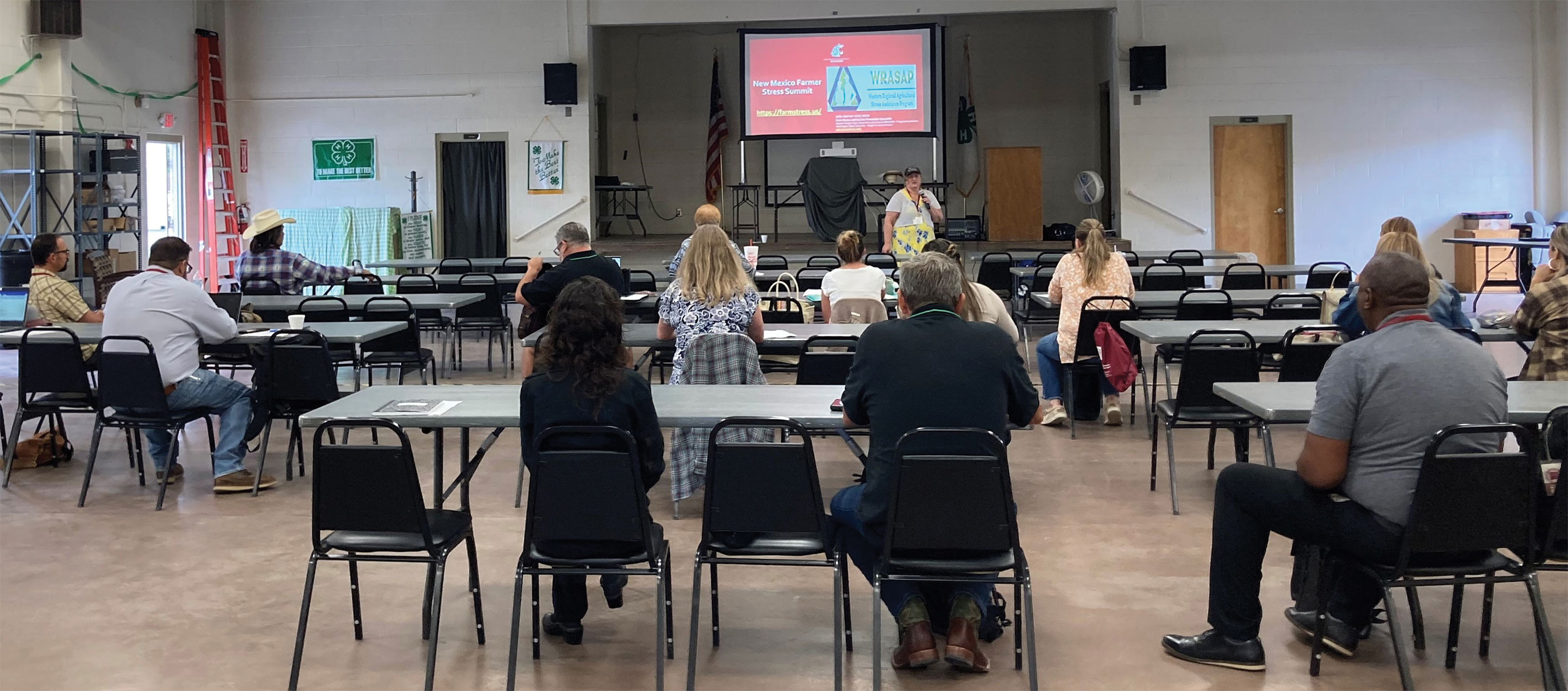
Mental health challenges are concerning issues for both youth and adults in New Mexico. NMSU’s Cooperative Extension Service is striving to not only meet those needs within communities, but continuously provide agents and community partners with training opportunities to ensure the latest research and skills are available.
Mind Matters is a mental health outreach program that teaches strategies and coping skills to help participants deal with stressful and adverse life experiences. The program curriculum was designed by the Dibble Institute and uses proven methods from neuroscience and trauma research. This program provides participants the tools needed to take charge of their responses and regulate their emotions when facing challenges. While this program was designed for youth 12 years and older, it can be used with adults as well.
Debbie Johnson first became involved with Extension’s mental health outreach 11 years ago when she founded TenderLove Community Center (TLCC) in Bernalillo County. TLCC creates a community of resources to support vulnerable individuals and strives to create a safe and supportive environment where they can recover and change their lives. Johnson shared that TLCC clients are often struggling and burned out, they may be struggling with alcohol or self-harm among other things. The Mind Matters program provides TLCC clients with resources and support to overcome their trauma.
Johnson recalled a participant who was referred from a counseling agency for suicidal thoughts due in part to a strained relationship with her daughter among other hardships. While at TLCC, she completed the Mind Matters Program.
“After classes, she openly confessed that she had found peace. She found peace in her heart,” Johnson said.
The participant overcame her suicidal thoughts and was able to reconnect with her daughter and eventually moved out of the recovery house and found a new job.
Through grant funding opportunities for community members, Johnson was able to complete the training to become a Mind Matters facilitator herself.
Katrina Lancellotti participated in an eight-week course of Mind Matters through TLCC. The program was very informative and provided hands-on learning opportunities.
“It made me much more aware of my mental health and made me realize that my feelings are justified,” Lancellotti said.
After completing a test about trauma, Lancellotti realized she was not alone in her experiences, that many people have had similar situations and that knowledge empowered her to share her story with others. Through the program, she also developed new techniques to overcome her anxiety.
With the suicide rates in New Mexico at 59% higher than the national average, the mental health resources provided through Cooperative Extension are invaluable. In 2019, a team of Extension professionals worked together to identify behavioral health issues across the state and what role the NMSU Cooperative Extension Service could have in the efforts to address these issues.
Taking a Step Toward Financial Success
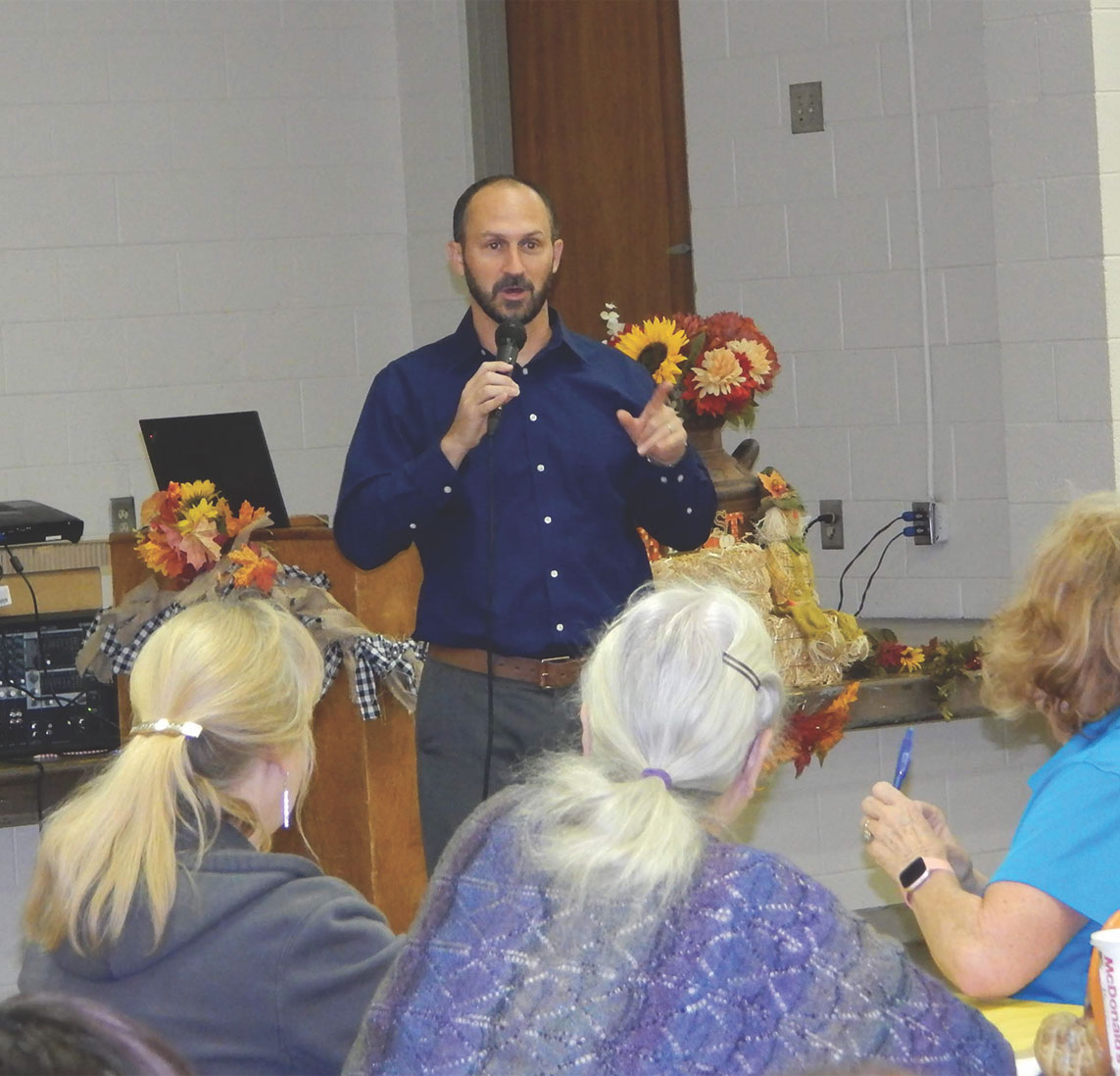
Managing finances can be an overwhelming and stressful process. When individuals are suffering from financial stress it can lead to depressive symptoms and cause conflicts in the home. The NMSU Cooperative Extension Service (CES) provides programming and publications on a variety of financial planning topics.
Madeline Gurney, Family and Consumer Science Extension Agent from Sandoval County, learned firsthand how impactful it can be to take charge of personal finances. Gurney participated in the online book club “4 Laws of Financial Prosperity” facilitated through Zoom. The three-part series focused on implementing tracking, targeting, trimming, and training to manage finances.
As she progressed through the course, Gurney began to use the tools she was learning in her daily life. In one instance, after tracking her spending, she realized she was spending more money purchasing fast food for breakfast than she realized. She decided to begin purchasing breakfast sandwiches and juice at the grocery store that could be prepared at home each morning before she left for work. In doing so, she not only saved money, but within the first three weeks of making the change she also experienced weight loss and health benefits. She also realized how much time she saved during her morning commute to work when she was no longer making an extra stop along the way.
“You can’t fix a problem if you do not know there is one,” Gurney said.
Gurney encourages others to start slowly but stay consistent in their personal finance journey. She has learned that small steps will snowball into big results. Earlier in her career, when she was making less money, Gurney shared that she was diligent about monitoring her finances. Later, when her income increased, Gurney stopped tracking spending and then found herself struggling. Her situation improved once she again started using personal finance tools.
“The good news is that we can all change and take charge of our finances to overcome the hardship. The amount of money you make has nothing to do with your financial situation. It is our mindset to live within our means or above it,” Gurney said.
It can be difficult to discuss financial topics with others, but Gurney has learned to have a more positive outlook on finances and hopes to share her results with others, so they are encouraged in their ability to improve their lives.
New Mexico currently has the third-highest rate of unemployment and is considered the third most financially distressed state in the nation. As such, CES specialists have worked to create new resources for financial planning including a workshop called “The 8 Success Habits Everyone Should Implement.” This programming strives to help families and individuals from a financial, emotional and individual growth standpoint.
To learn more about available programs, visit mymoney.nmsu.edu.
Strength Training Program Grows Support Group for Participants
Strength training is a vital part of anyone’s exercise routine, but especially so for older adults. Extension Get Fit is a new community-based strength training program for individuals aged 55 and older. The program aims to help improve strength, balance, and flexibility.
The program is led by a trained agent for the first 12 weeks; after that, the group has the option to continue the program with a trained peer leader. Classes are held twice each week and last for one hour. Each session is a full workout consisting of a warm-up activity, eight to 10 strengthening exercises and a cool-down period. The exercises utilize dumbbells or resistance bands, and the cool-down period incorporates flexibility movement into the session.
Beginning strength training can be intimidating and uncomfortable to attempt alone, so this class offers guidance and support to individuals reaching for similar fitness goals. Pam Garcia of Bernalillo County not only participated in the first program offered in her county, but she has plans to complete the training so she can facilitate future sessions of the program to community members. Garcia heard about the program from her Extension agent and appreciated that the classes were held twice each week, which is the recommended fitness schedule for strength training. This allowed all participants to work together for consistency and encouragement as they not only built their strength but also developed a routine for fitness. Garcia trusted her Extension agent to provide an organized, research-based program; and she was reassured to learn the program had successful results through the University of Arkansas where it was developed.
“The exercise routines are age and ability appropriate for us older folks,” Garcia said. “It provides a positive supportive group of participants to encourage each other. The exercise and social interaction provide both physical and emotional benefits.”
After experiencing worsening arthritis in her hands, Garcia was hopeful that through the Get Fit program, she would learn exercises that may relieve some of her pain and discomfort. She learned which movements eased her pain and improved the function of her hands. Pam shared how empowering it can be not only to complete the exercises but also increase her repetitions and the weights used.
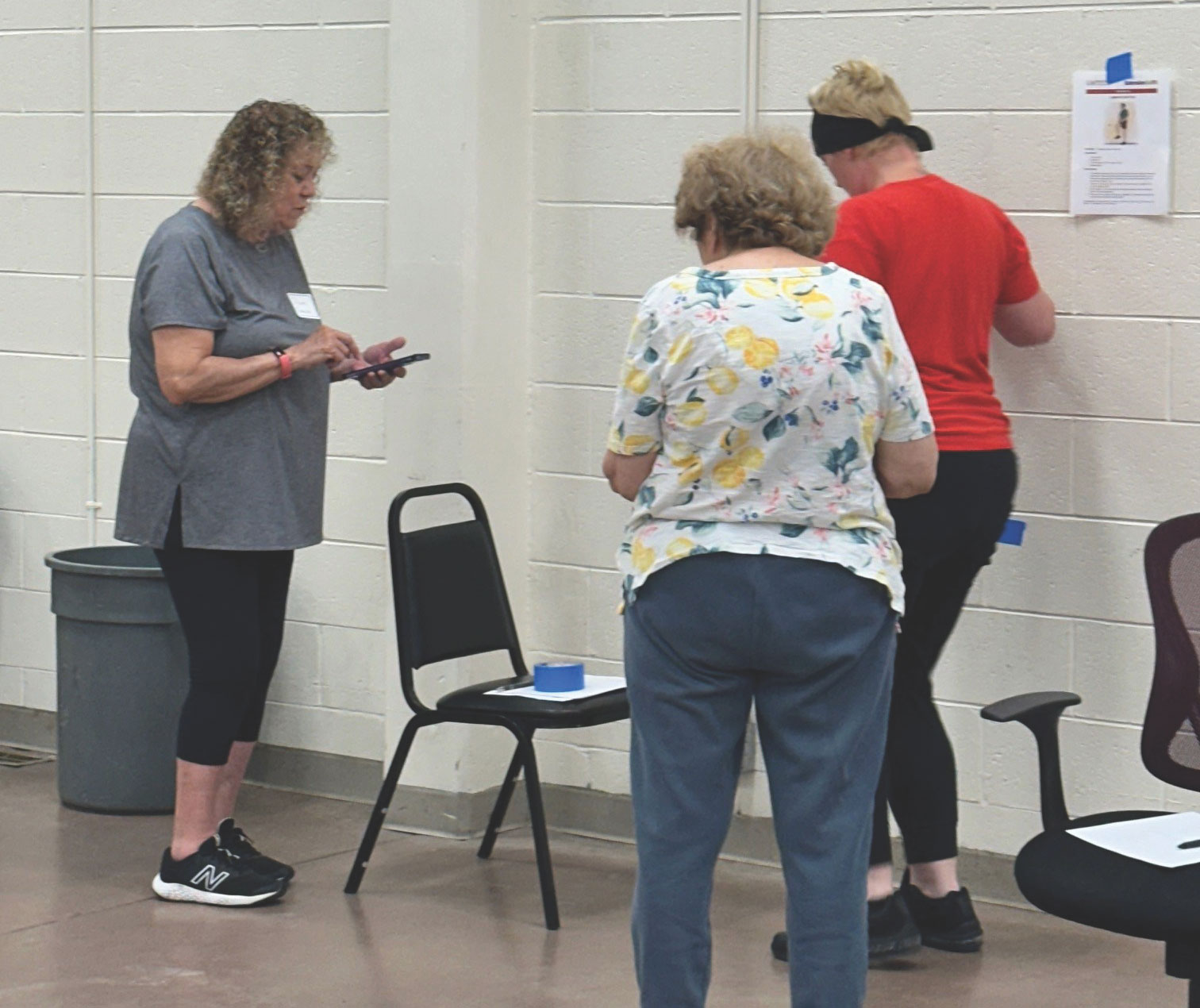
Extension Get Fit provides a positive space for participants to build a supportive community that can motivate one another.
Creating a Healthy Lifestyle Together
NMSU’s Cooperative Extension Service (CES) strives to provide trainings and educational opportunities across New Mexico. Many programs work together to provide a continued learning experience. For example, in Santa Fe County, CES collaborates with Presbyterian Santa Fe Medical Center and other community partners to meet the community’s health and wellness needs. It’s partnerships like these that help New Mexicans take charge of their health journeys.
What started as a decision to be proactive in their health led to Mark and Michaela Tibbetts participating in three different programming workshops over the course of one year in Santa Fe County. Michaela Tibbetts has been a member of Santa Fe County Extension Homemakers, part of Extension Association of New Mexico (EANM) for three years and has participated in Extension outreach as a group member. It wasn’t until recently that she and her husband began this journey with CES together.
After learning their blood work and cholesterol were of concern the previous winter, the couple participated in Kitchen Creations, a pre-diabetic class, in January. They attended the classes together, learning how to choose healthy food options as well as how to eat the right portions of protein and vegetables for their health needs.
“A lot of people don’t have diabetes, but they don’t realize they are on the edge,” said Mark Tibbetts. He shared how the class offered a new way of thinking about creating a menu and enhancing food options while still maintaining healthy food choices. After a few months of the lifestyle change, they each lost 10 pounds and saw significant changes in their blood sugar levels and overall bloodwork.
“Not only did we gain the information on healthy eating, but we have been able to foster friendships outside of the classroom as well,” Michaela Tibbetts said.
Michaela Tibbetts explained that the courses are very hands-on, creating a social aspect that allows everyone to have real conversations and develop connections with one another.
During the year, they also attended cooking classes through the Presbyterian Medical Center. These classes took the information they learned in the previous program and put it into practice as they followed new recipes to create healthy meals together.
The next step to continued success was for the couple to participate in the CES Stress and Resilience classes, which encouraged Mark and Michaela to be active, practice self-care and gratitude, and manage stress. Exercising for 30 minutes has now become part of their daily routine.
Mark and Michaela were challenged to look at the ingredients being used and consider what additives are in the food they eat. They were inspired to join the Seed to Supper class, a collaboration between Ideas for Cooking and Nutrition (ICAN) and the Master Gardener group. Following the course, the couple even planted a garden over the summer. They had to do a bit of work to get started, as they mentioned their soil is difficult for growing. After getting raised beds and enclosing their garden, they grew beautiful sunflowers and some vegetables. The couple expressed gratitude for the Master Gardener group as they began their garden. “Everyone has been generous with their expertise in all of this,” Michaela Tibbetts said.
“Not only did we gain the information on healthy eating, but we have been able to foster friendships outside of the classroom as well.” – Michaela Tibbets
The skills they learned over the course of the year has allowed them to create healthy habits in their everyday choices. Mark Tibbetts shared how his taste and craving for certain food has changed during this process as well. He previously would have had a bowl of ice cream or a fast-food hamburger without much concern, but now if he gets the craving, a small ice cream scoop is all that is needed to be satisfying. In the case of fast food, he shared that he doesn’t feel great after eating it now that he is in the habit of eating healthier.
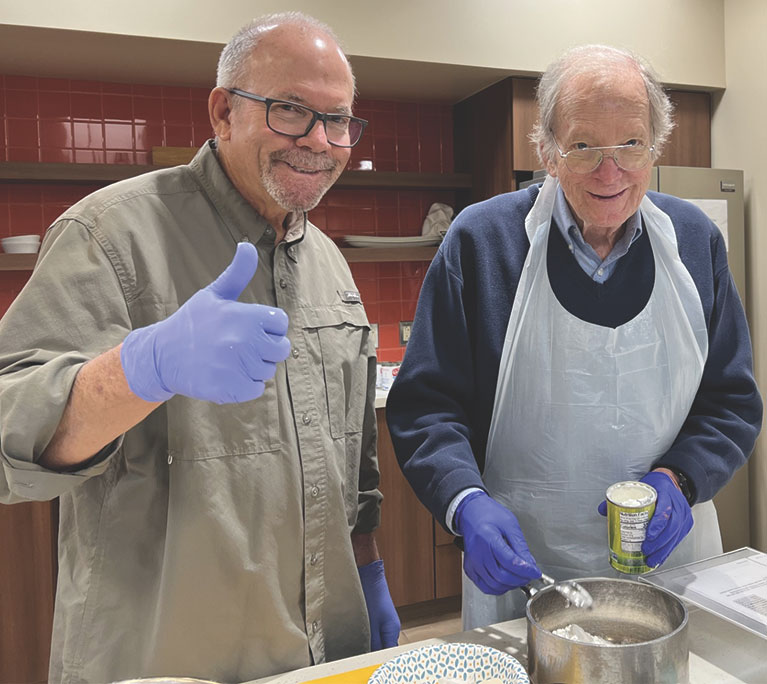

Community Development
Extension Strengthens Emergency Training with Large Animal Rescue Strategies
When involved in a large animal rescue or emergency, being trained and prepared can make a huge difference in the outcome of that event.
Joe Kenmore has had his fair share of experience in this matter. Kenmore served as the Emergency Manager in Lincoln County from 2008 until his recent retirement. During that time, Kenmore participated in a wide variety of emergency trainings provided through the Cooperative Extension Service.
With the amount of 911 calls involving large animal incidents increasing, it became necessary for more directive training opportunities for these cases. These trainings are held across the state and cover a variety of topics, making each training build on the last and allowing participants to gather both a wealth of knowledge as well as a community of individuals who are trained and willing to help one another.
Through his experiences as the Emergency Manager, Kenmore realized just how much his position connected to the livestock sector. Whether it be a foreign disease, or a cattle truck roll over on the road, he wanted to be prepared to handle the situation in the most effective way possible. Being prepared for the situations that you never hope will happen reduces the likelihood of additional problems when the emergency does occur.
Kenmore responded to a cattle truck rollover between Carrizozo and Corona in July of 2022. In these situations, time and knowledge mean everything, and in this case everyone on site was trained and ready to assist. They had one person directing people from the trailer and several livestock agents working together to guide the livestock off the highway and into the pasture, so they were safe and away from further danger. Knowing who to call first in these large animal rescue events can help the whole process run more efficiently and the training opportunities provided through Extension can make that difference.
“All of these exercises are how you learn to get the right people to the right place,” Kenmore said.
Since many first responders are not trained in emergencies involving livestock, they may not be familiar with aspects of cattle behavior, livestock trailers, or the list of individuals who need to be notified when livestock are involved. Kenmore encouraged representatives from three of the Lincoln County fire departments to attend a large animal rescue where they received directed training on the layout of a cattle trailer so they could know how and where to use their tools to cut through the trailer to get cattle out safely in an emergency.
Visit preparedness.nmsu.edu to learn more.
Extension Innovation Allows People to Handle Horses Safer
Learning to handle horses, like many new activities, can be a bit intimidating. But thanks to a research-based, interactive web module developed by NMSU Extension’s Innovative Media Research and Extension team, you could take the first steps towards handling horses safely from home.
While the developers of the module, called “Stay Safe Working with Horses,” point out it’s not meant to replace in-person training, the module does support deeper understanding and multiple modes of learning.
Digital media tools like “Stay Safe Working with Horses” provide a convenient way for workplaces, riding schools, and volunteer organizations such as therapeutic riding programs to introduce new horse handlers to safe techniques based in horse behavior, before they begin hands-on horse handling. The module is available on computers or tablets in formal (classroom) or informal settings.
“Staying Safe Working with Horses” is not only research-based but also tested by research. The research study, done in collaboration with NMSU’s Therapeutic Riding Program, measured people’s self-reported knowledge after using the module, their level of enjoyment with the lab, and their perception of product usability.
Preliminary results indicated that 64.7% of participants enjoyed the module experience, and 69% planned to share the module with others. Overall, after using the interactive module, participants had an increased perception of knowledge.
To one participant, the information about horse behavior stood out.
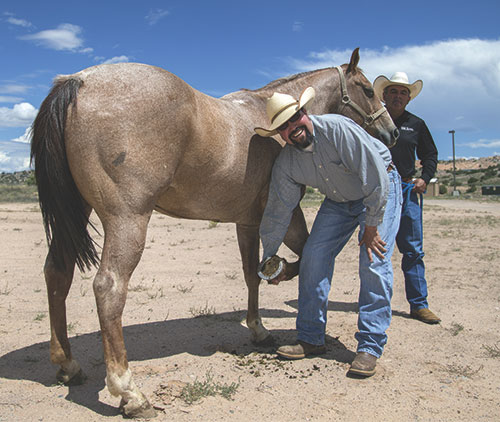
“I think the most helpful part of the module was mentioning the types of horse behaviors a handler might encounter and the various things a horse might do before a behavior,” the participant told researchers. “Also, I liked the turnout part because a lot of horses build bad habits when being turned out and the handler needs to know how to prevent this.”
The module was first developed in 2013 but was recently updated with accessibility features and made available free online. For more information, visit staysafewithhorses.org.
Coming Together in Times of Need
NMSU’s Cooperative Extension Service (CES) strives to meet the needs of people in the communities it serves. This includes collaborating with the New Mexico Department of Agriculture (NMDA) and multiple other industry and agency partners to create an agricultural network that works together to respond quickly during emergencies.
In New Mexico, those emergency situations are often from wildfires and subsequent flooding. The support CES provides varies depending on the needs of the community after such an event. In some cases, CES disseminates donations, such as hay and shelter for livestock, back to the public; at other times, agents are connecting those in need with volunteers providing financial resources, medical assistance, or housing options.
In 2022 the Hermits Peak and Calf Canyon fire resulted in devastating loss across northern New Mexico. Many communities were affected, and it was important to communicate relief efforts as well as information for organizations aiding those affected.
Enter Lena Atencio, a resident of Rociada, who became a fire liaison for CES in San Miguel and Mora Counties so she could support her community during this hardship. She supported CES in that capacity for eight months.
During that time, she helped collect information to create a resource guide with contact information for local, state, and federal organizations that were providing support to victims of the fire. Atencio explained that a large population of those living within the burn scar did not have phone service or social media, so the printed resource guide was bulk mailed to every address.
“The goal was to try and reach as many residents as possible with valuable information as to who to contact for the support they may need,” Atencio said.
A more recent development in fire response occurred in 2024 when Extension specialists partnered with academic
faculty and staff to mobilize mental health professionals to Ruidoso and surrounding areas following the South Fork Fire and Salt Fire. Clinicians gathered to provide support to the first responders and city workers as well as to distribute resources on managing stress through crisis. These efforts were a collaboration of many organizations and units all working together to ensure mental health needs were being addressed and support was available in areas affected by the fires.
CES is a network of caring individuals, including agents, specialists and volunteers working together to support their neighbors and communities in times of need.
Public Officials Thriving with NM EDGE
Through assistance from NM EDGE, government employees in the state of New Mexico continue to grow and prosper in their respective fields.
“On my journey of continued learning, I have really taken away a lot of great information and tools to help me succeed in my career. I have learned to have wisdom and courage to collaborate and find a path to conflict resolution, even if it is with someone who I may not get along with. I also learned that anyone can be a leader, regardless of their position. I can do this by having vision, passion and integrity, as well as leading by example,” said Sarah Rodriguez, Santa Fe County Public Works Department Administrator.
NM EDGE (Education Designed to Generate Excellence in the public sector) is designed to provide a comprehensive course of study to administrators, managers, elected officials, and staff in local, state, tribal, and national government. Through this program, participants can acquire and apply best practices, theories, and strategies based on the highest professional standards.
“My favorite thing about the NM EDGE classes was the variety of different classes that were offered. These classes ranged from election and probate law to basic title conveyance,” said Casey Higgins, Chaves County Bureau of Elections Chief. “Completing the certification classes has greatly enhanced my understanding of what is required and expected in the office. This has improved my ability to better serve the public as a government employee, which not only benefits my office, but also the citizens of Chaves County.”
NM EDGE is an umbrella organization operated through the NM Cooperative Extension Service under which the County College (founded with NM Association of Counties), the NM Certified Public Manager® Program, and other continuing education certification programs are administered. The idea behind NM EDGE is to expand training programs beyond county government into other areas of the public sector such as municipal entities, state agencies and other public-oriented organizations that have a need for specialized training.
In 2023, NM EDGE was reaccredited through the National Certified Public Mangers Consortium through 2027. Annually, about 400 online and in-person classes are offered and about 1,200 public employees take NM EDGE classes.
For more information, visit nmedge.nmsu.edu.
Honoring Tradition, Utilizing New Ag Practices
New Mexico Tribal Extension strives to work with tribes and pueblos to build connections and share community-based educational programs to Native American communities across the state. The program’s focus is on the revitalization of agriculture, culturally appropriate youth leadership programs and creating strong connections between individuals, families, and communities.
Gilbert Lewis, a fourth-generation Acoma Pueblo farmer and rancher, has been dedicated to blending traditional ways of planting crops and raising livestock that have been passed down each generation with new techniques that help grow his family business.
Lewis attributes many of the updated processes to his family’s participation in the New Mexico Pueblo Beginning Farmers
and Ranchers Program through the NMSU Cooperative Extension Service.
“The program was a blessing, particularly getting to see different operations,” Lewis said. “It is unheard of some of what we are doing to advance our operations. Extension programming is helping us to better our community while understanding the need to preserve our culture.”
The Tribal Extension program serves the Navajo Nation, Southern Pueblos, Northern Pueblos, and the Jicarilla Apache Reservation. Cooperative Extension agents strive to tailor their programs to make them relevant, timely and impactful for each community. Lewis said he finds the agents and specialists to be caring and genuine in their approach to supporting pueblo ranchers.
“They really hear our concerns and work with us on solutions and bring training opportunities to us,” Lewis said. “Extension personnel have helped us to be curious, provided knowledge about trends in the industry and allowed us to grow.”
Tribal cultures and language are incorporated in programming for both adults and children. Tribal Extension focuses on four areas: Agriculture and Natural Resource Management; Youth Education; Community Resource, Economic and Leadership Development; and Strengthening Families through Education in Health, Nutrition and Family Resource Management.
To learn more about Tribal Extension and the programming they provide, visit tribalextension.nmsu.edu.
Empowering Students
Students Prepare for Opportunities and Careers After High School
Providing an opportunity for students to experience the possibilities after high school can make a difference in the direction a student takes.
Tommye Allsup, the Counselor at Cliff Schools, has been bringing students to Aggie Next Step since 2021. She explained the event aligned with the goals of a health class being taught to the eighth grade students that year. Personal development, academic and career skills and cultivating a successful transition from high school to beyond were shared objectives of both the health class and the Aggie Next Step program.
Allsup became the representative from Cliff Schools working with the Aggie Next Step Coordinators to customize the experience to the interests of Cliff’s students.
“This has by far been the most beneficial exploration of postsecondary options they have had exposure to,” Allsup said. “It’s not just a typical college tour where they can get lost in the crowd. It’s been intentional, detail focused, and well thought out with the interests of my students at the core. Nothing else has compared.”
Cliff Schools expanded from bringing only the eighth grade class, to including interested junior and senior high school students in the experience as well. This gave their high school students the opportunity to visit specific programs of interest prior to graduation. They met with professors to gain a better understanding of what the program is and how it can fit into the students’ future goals. The program also allows students a better look at how classes are presented, student life and the dynamics of a college campus.
Three of the seven Cliff senior students that attended the 2023 Aggie Next Step program are currently attending NMSU or Doña Ana Community College. Aggie Next Step is a post-secondary program aimed at students in grades eight to 12. The program aims to provide students the skills and goals needed to successfully transition to a higher education institution, technical or trade school, or alternative career path following graduation from high school.
Aggie Next Step also offers a series of modules that align with the goals of the Advancement Via Individual Determination (AVID) program in middle and high schools. Ginger Miller, an AVID teacher at Berrendo Middle School in Roswell, utilizes the modules to supplement her curriculum.
“The students have enjoyed working through the modules and have developed a stronger understanding of the soft skills essential for academic success and future careers,” Miller said. “Last year’s college experience was incredible, leaving both students and adults excited and deeply impressed.”
To learn more, visit nm4h.nmsu.edu/next-step.html.
Interns Learn First-Hand How Extension Serves Each Community
Katelyn Peach knew she wanted to participate in an Extension internship since she met a summer intern in her home county in Bernalillo in 2023. She applied as soon as she could and was placed with Valencia County Extension in the summer of 2024.
NMSU Cooperative Extension Service offers NMSU students the opportunity to intern with various Extension departments and offices across the state. This provides students with first-hand experience assisting with programming, organizing outreach, and understanding the reach of Extension within the community. The internship program recently hosted 17 interns statewide in 2024, including locations in county offices as well as with specialists on the main NMSU Las Cruces campus.
Peach is passionate about working with youth and enjoyed working with the 4-H and school programs over the summer, but what really surprised her was how much Extension helped the community. She had previous experience with the 4-H program, but through the internship, she saw Extension in action as people came into the office for solutions to their problems. Some came in asking questions about issues with their trees and crops, others were participating in the Ideas for Cooking and Nutrition (ICAN) Program.
“It made me appreciate Extension so much more and realize that I would like to make a career in this field in the future” Peach said. She is currently studying agricultural economics and agricultural business.
Experiencing the preparation and planning that goes into creating successful Extension programming gave Peach a glimpse into what her future could hold. Valencia County Extension took time to not only talk through the thought and planning that goes into each decision that is made, but to include Peach in those discussions and make her feel valued.
Peach ended her internship not only with more insight into what happens in New Mexico Extension, but also having helped organize a variety of events and even present two programs on her own, giving her first-hand experience that she will carry with her.
Frank Barela, a 2024 intern with Socorro County, was also surprised to learn how much Extension agents serve their communities.
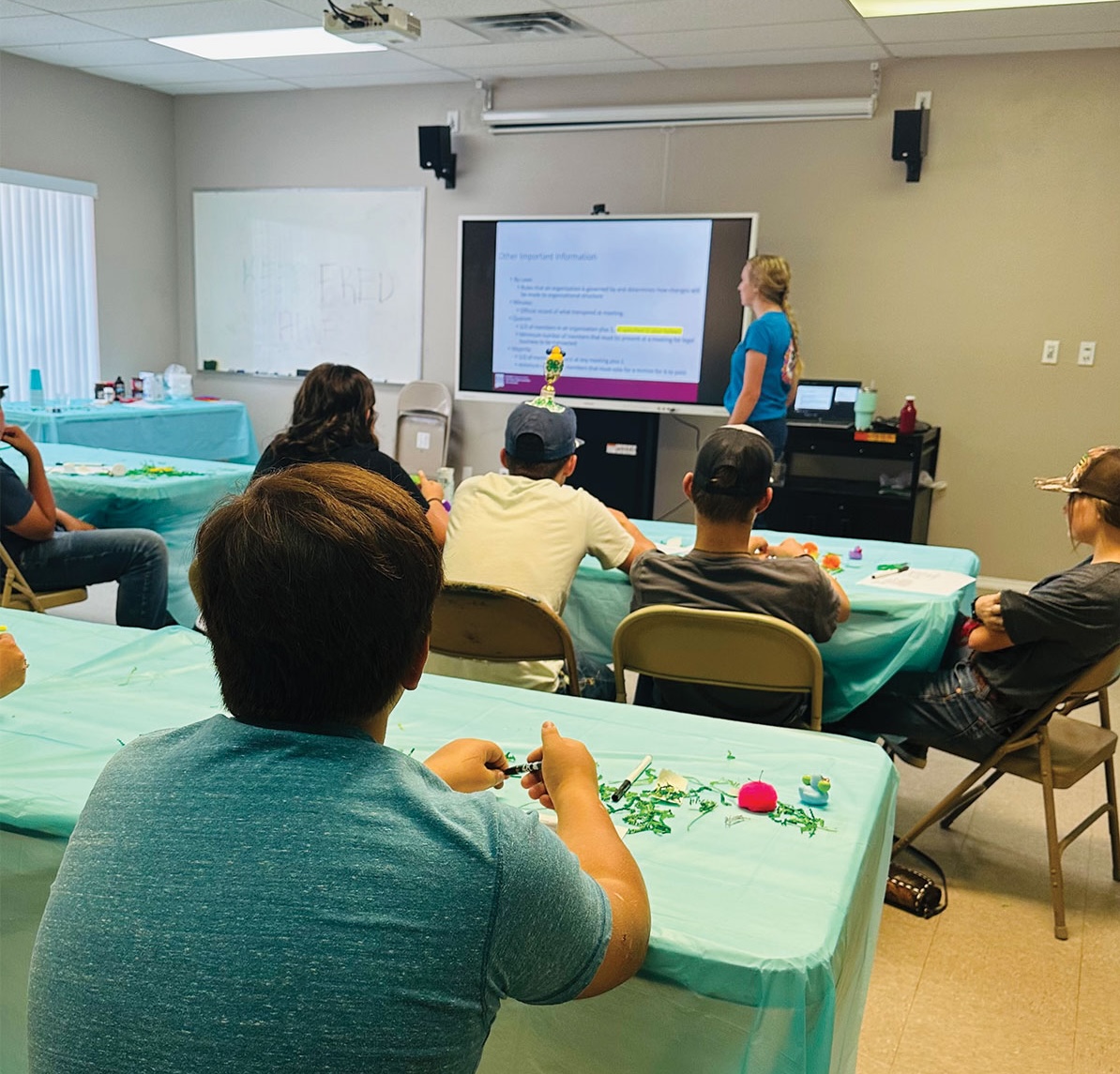
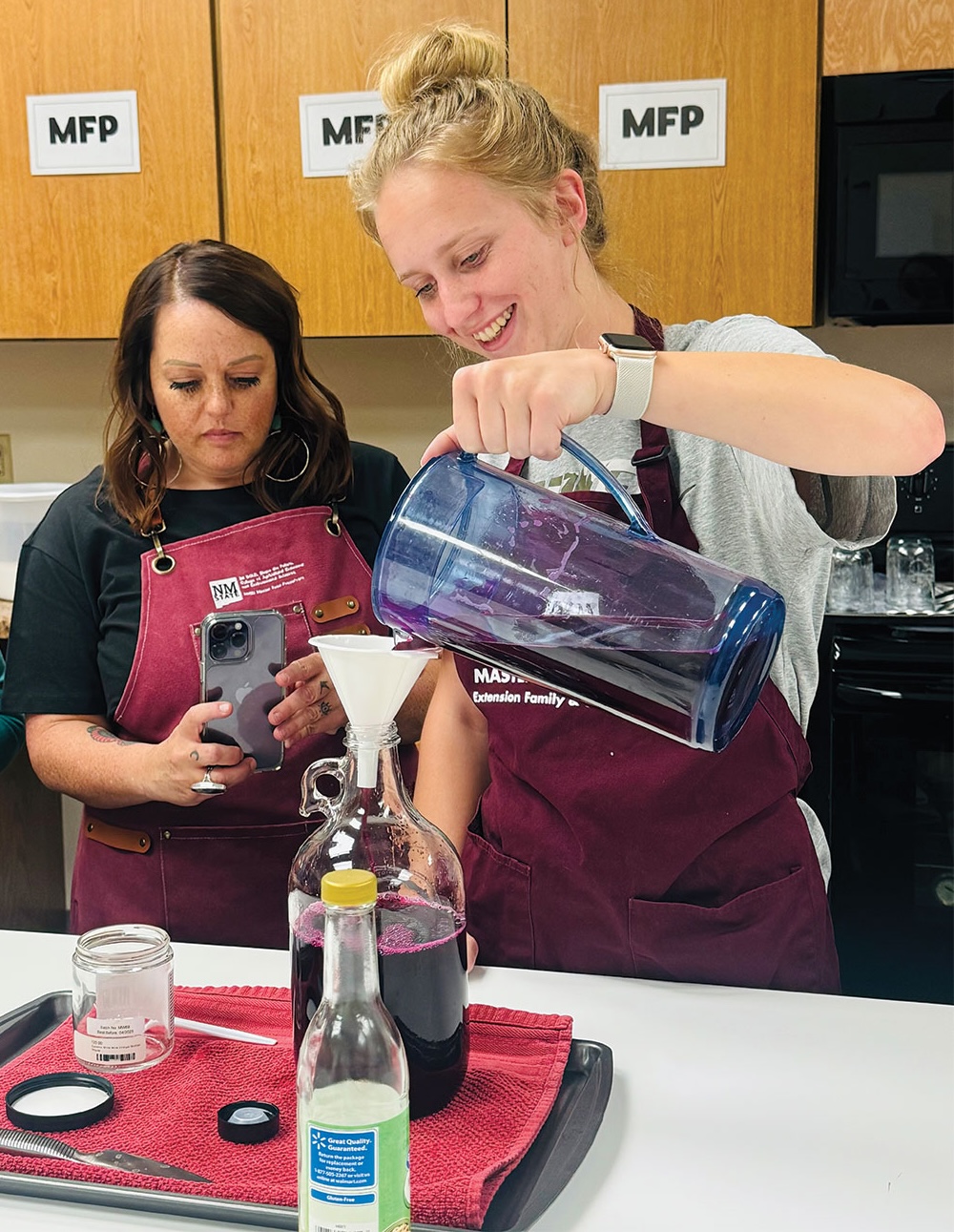
“I didn’t know much about Extension before this internship,” said Barela. “However, the more I learned about what Extension was all about, the more I began to consider Extension as a career option.”
Barela worked with the city youth programs, joined the agent on site visits and assisted with plant and insect diagnostics. Sharing his passion of wildlife conservation with the county 4-H members was a highlight of his internship. Barela is currently studying in the Department of Fish, Wildlife and Conservation Ecology.
“The more I learned about what Extension was all about, the more I began to consider Extension as a career option.” – Frank Barela
This internship opportunity opens doors for young professionals to network within their desired field of study as well as allows them to explore the specialty areas and groups of people that Extension serves. Two interns were selected to focus on communications for NMSU’s Cooperative Extension Service as a whole. In this role, they had the opportunity to travel around the state attending a variety of Extension events, workshops, and conferences to take images that could be used for publications, social media and websites. Many of the images within this brochure are courtesy of the 2024 agricultural communication interns, Jazmyn Garcia and Jordan Hamill. Garcia is a student in the Department of Agricultural and Extension Education and Hamill is studying animal science.
For more information on internship opportunities through CES, visit extension.nmsu.edu/internships.
Serving the state


County Extension Offices
Bernalillo County
505-243-1386
bernalillo@nmsu.edu
bernalilloextension.nmsu.edu
Catron County
575-533-6430
catron@nmsu.edu
catronextension.nmsu.edu
Chaves County
575-622-3210 / 3211
chaves@nmsu.edu
chaves-extension.nmsu.edu
Cibola County
505-287-9266
cibola@nmsu.edu
cibolaextension.nmsu.edu
Colfax County
575-445-8071
colfax@nmsu.edu
colfaxextension.nmsu.edu
Curry County
575-763-6505
curry@nmsu.edu
curryextension.nmsu.edu
De Baca County
575-355-2381
debaca@nmsu.edu
debacaextension.nmsu.edu
Doña Ana County
575-525-6649
donaana@nmsu.edu
donaanaextension.nmsu.edu
Eddy County
575-887-6595
eddy@nmsu.edu
eddyextension.nmsu.edu
Grant County
575-388-1559
grant@nmsu.edu
grantextension.nmsu.edu
Guadalupe County
575-472-3652
guadalupe@nmsu.edu
guadalupeextension.nmsu.edu
Harding County
575-673-2341
harding@nmsu.edu
hardingextension.nmsu.edu
Hidalgo County
575-542-9291
hidalgo@nmsu.edu
hidalgoextension.nmsu.edu
Lea County
575-396-2819
lea@nmsu.edu
leaextension.nmsu.edu
Lincoln County
575-648-2311
lincoln@nmsu.edu
lincolnextension.nmsu.edu
Los Alamos County
505-662-2656
losalamos@nmsu.edu
losalamosextension.nmsu.edu
Luna County
575-546-8806
luna@nmsu.edu
lunaextension.nmsu.edu
McKinley County
505-863-3432
mckinley@nmsu.edu
mckinleyextension.nmsu.edu
Mora County
575-387-2856
mora@nmsu.edu
moraextension.nmsu.edu
Otero County
575-437-0231
otero@nmsu.edu
oteroextension.nmsu.edu
Quay County
575-461-0562
quay@nmsu.edu
quayextension.nmsu.edu
Rio Arriba County (Main Office)
Abiquiu: 505-685-4523
rioarriba@nmsu.edu
rioarribaextension.nmsu.edu
Rio Arriba County (Sub Office)
Tierra Amarilla: 575-588-7423
losojos@nmsu.edu
rioarribaextension.nmsu.edu
Roosevelt County
575-356-4417
roosevelt@nmsu.edu
rooseveltextension.nmsu.edu
San Juan County
505-334-9496
sanjuan@nmsu.edu
sanjuanextension.nmsu.edu
San Miguel County
505-454-1497
sanmiguel@nmsu.edu
sanmiguelextension.nmsu.edu
Sandoval County
505-867-2582
sandoval@nmsu.edu
sandovalextension.nmsu.edu
Santa Fe County
505-471-4711
santafe@nmsu.edu
santafeextension.nmsu.edu
Sierra County
575-894-2375
sierra@nmsu.edu
sierraextension.nmsu.edu
Socorro County
575-835-0610
socorro@nmsu.edu
socorroextension.nmsu.edu
Taos County
575-758-3982
taos@nmsu.edu
taos-extension.nmsu.edu
Torrance County
505-544-4333
torrance@nmsu.edu
torranceextension.nmsu.edu
Union County
575-374-9361
union@nmsu.edu
unionextension.nmsu.edu
Valencia County
505-565-3002
valencia@nmsu.edu
valenciaextension.nmsu.edu
Tribal Extension
505-863-3432
tribalextension.nmsu.edu
